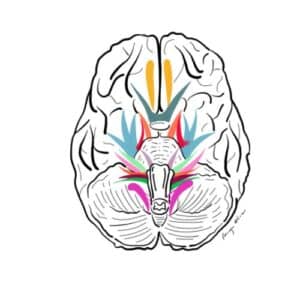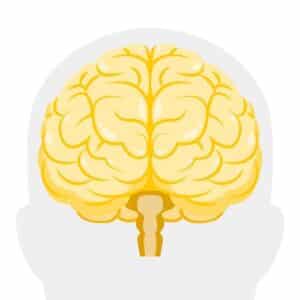4 min read
Cranial Nerves: What They Are and How They Work
Cranial nerves are essential for our daily functions, from smelling to seeing. Learn everything you need to know about these nerves and how they work in this comprehensive guide.
Cranial nerves are a complex network of nerves that play a crucial role in our daily functions, including our ability to smell, taste, see, hear, and move our facial muscles. In this comprehensive guide, we’ll explore everything you need to know about cranial nerves, including their functions, anatomy, and common disorders.

1. What are cranial nerves and how many are there?
Cranial nerves are a set of 12 pairs of nerves that originate from the brainstem and exit the skull through small openings. Each pair of nerves is numbered and named based on its function and location. The cranial nerves are responsible for controlling various functions in the head and neck, including sensory and motor functions. Understanding the anatomy and function of each cranial nerve is essential for diagnosing and treating disorders that affect these nerves.
2. What functions do each of the cranial nerves control?
Each of the 12 pairs of cranial nerves has a specific function and controls different parts of the head and neck. For example, the olfactory nerve (cranial nerve I) is responsible for the sense of smell, while the optic nerve (cranial nerve II) controls vision. The trigeminal nerve (cranial nerve V) controls sensation in the face and is responsible for chewing, while the facial nerve (cranial nerve VII) controls facial expressions and taste. The vagus nerve (cranial nerve X) controls many vital functions, including heart rate, digestion, and breathing. Understanding the functions of each cranial nerve is crucial for diagnosing and treating neurological disorders.
3. How are cranial nerves tested and evaluated?
Cranial nerves are tested and evaluated through a series of physical exams and diagnostic tests. A doctor may check for abnormalities in vision, hearing, smell, taste, and facial movements, as well as reflexes and muscle strength in the head and neck. Imaging tests, such as MRI or CT scans, may also be used to evaluate the cranial nerves and detect any abnormalities or damage. A thorough understanding of the functions and testing methods of cranial nerves is essential for healthcare professionals in diagnosing and treating neurological disorders.

4. What are some common disorders or conditions related to cranial nerves?
There are several disorders and conditions related to cranial nerves, including Bell’s palsy, trigeminal neuralgia, and optic neuritis. Bell’s palsy is a condition that causes sudden weakness or paralysis of the facial muscles, often affecting one side of the face. Trigeminal neuralgia is a chronic pain condition that affects the trigeminal nerve, which is responsible for sensation in the face. Optic neuritis is an inflammation of the optic nerve, which can cause vision loss or changes in vision. These conditions can be diagnosed and treated by healthcare professionals with a thorough understanding of the cranial nerves and their functions.
5.How can you maintain the health of your cranial nerves?
Maintaining the health of your cranial nerves is important for overall well-being. Some ways to do this include getting regular exercise, eating a balanced diet, getting enough sleep, managing stress, and avoiding harmful substances like tobacco and excessive alcohol. It’s also important to seek medical attention if you experience any symptoms related to cranial nerve disorders or conditions, as early diagnosis and treatment can improve outcomes.
